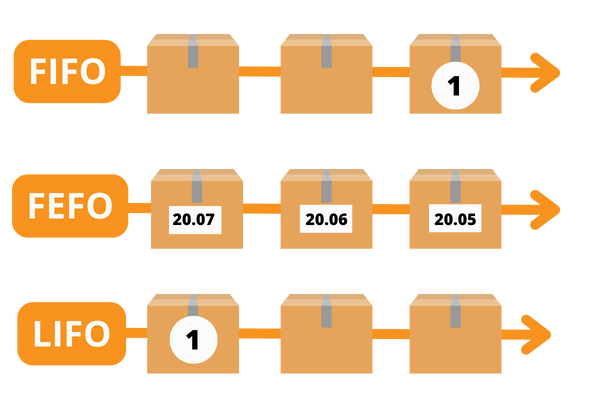How to plan the distribution of goods in the warehouse?
_1.png)
Appropriate arrangement of products in the warehouse speeds up the entire process of goods flow. There are several criteria and planning strategies on the basis of which the appropriate place to store a given assortment is determined.
The location of the goods can be divided into two types. The first one is a fixed and defined place of goods, which is previously assigned to a given product, thanks to which it is easier to maintain order in the warehouse. The second way is to randomly place loads in the place where there is currently a free pallet space. Very often, warehouses use two strategies at the same time, e.g. when accepting a delivery. New products are first placed in a random free slot, and only then are their specific locations planned.
How to plan the distribution of goods in the warehouse?
When planning the arrangement of the assortment, it is worth considering the following parameters of the goods and grouping the products according to them. One of the most important parameters are the properties of the goods. When determining the location of a given product, the following factors are taken into account: its dimensions and weight. The heaviest and largest goods are placed on the lowest levels, while smaller and lighter ones are placed at the top of the rack. Thanks to this, bulky products are easier to pull out during picking (e.g. with the help of a forklift). Keeping this rule allows you to ensure safety in the warehouse, reducing the risk of damage to the storage rack or its collapse. For small products, several standard carton dimensions are often specified in which smaller products will be stored. In this way, it is easier to keep order in the warehouse and plan the distribution of a given assortment. Another criterion is also the method of storage, e.g. chemicals or food should be stored in a strictly defined manner. Some products, for example, need to be stored at the right temperature or can be stored outdoors due to their resistance to weather conditions. Thanks to this, you can save space in the warehouse or give it up altogether. This also involves grouping the goods and placing them in the appropriate section, so that products of the same type are close to each other (however, they are properly marked so as not to be confused when picking). Depending on the given assortment, it is worth determining the space between the shelves. If there are large-size products in the warehouse, wide aisles should be created to allow forklifts to maneuver freely. On the other hand, if the goods are small and the warehouse is small, narrower aisles can be created in some places, but with the right distance to be able to freely pick up the product. When organizing a warehouse, it is essential to assign appropriate markings to products and locations. When the warehouse is already divided into zones, corridors, racks, they should be properly described. Depending on your preferences and the systems you have, zones can be marked with numbers, letters or codes.
Warehouse placement strategies
When planning the placement of goods, FIFO or LIFO, FEFO strategies can be helpful.

FIFO (First in First Out) a method of organizing the distribution and flow of goods meaning "first in, first out". It consists in separating the assortment in the order in which they arrived at the warehouse when accepting the goods. Thanks to this, when picking the order, the goods that came to the warehouse first are collected first. This method is one of the most popular and used in the case of food products.
The reverse method is LIFO (Last In First Out), i.e. the goods that are received last will be released to the customer first. The method is especially recommended for heavy goods that can be stored for a long time.
A technique similar to FIFO is FEFO (First Expired First Out), thanks to which goods with an expiration date are about to end are the first to leave the warehouse. Thanks to this, the waste of products with a specific expiration date is minimized.
Some warehouses also use the method of arranging according to the flow of goods. After some time, it is also worth analyzing which products sell most often and place them closest to, for example, a packing station. On the other hand, the products that sell the least often can be placed at the back of the warehouse. This significantly improves the entire flow of goods.
It is worth analyzing your warehouse resources from time to time to see if the chosen method works and plan reorganization. Regardless of whether you are just planning the organization of the warehouse or you want to create more space on it, take care of the right plan using the above-mentioned points and the 3D Smartload planner! New spaces available soon, with ready warehouses. Come in and check it out for a 14 days for free and without obligation!